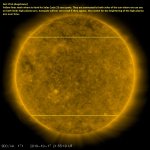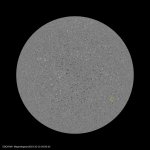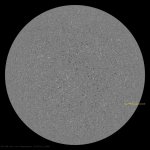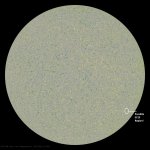Solar Weather Affects Our Hobby!
I am keeping this short and simple. Sunspots will appear dark in the middle of a region filaments and taller filament surrounding the dark area. This image explains what area of the sun to expect new cycle sun spots (SC25). I use AIA 171 A (Angstroms). The sun exhibits a corkscrew magnetic field. The yellow line connects from the left next to the lower leg of a high plasma arc all the way to the right to another high plasma arc on its upper leg on both hemispheres on the solar disk. Along this line is a good idea where to start. Look along the line, toward the edges of the polar coronal holes, or just below the yellow lines. Regions can also represent Cycle 25 without them being a sunspot. Those MIGHT grow into sunspots. As shortwave listeners we want sunspots because flux tubes are more apparent. Increasing the chance for DX reception and better local reception. There are still flux tubes appearing but at a low rate.

Solar Cycle 25 could begin at any time between now and the middle of 2020.
Some good sources that show current images from the SDO space vehicle:
SDO
SDO | Solar Dynamics Observatory
LMSAL Solar Soft
SolarSoft Latest Events
(May have down times!)
I am keeping this short and simple. Sunspots will appear dark in the middle of a region filaments and taller filament surrounding the dark area. This image explains what area of the sun to expect new cycle sun spots (SC25). I use AIA 171 A (Angstroms). The sun exhibits a corkscrew magnetic field. The yellow line connects from the left next to the lower leg of a high plasma arc all the way to the right to another high plasma arc on its upper leg on both hemispheres on the solar disk. Along this line is a good idea where to start. Look along the line, toward the edges of the polar coronal holes, or just below the yellow lines. Regions can also represent Cycle 25 without them being a sunspot. Those MIGHT grow into sunspots. As shortwave listeners we want sunspots because flux tubes are more apparent. Increasing the chance for DX reception and better local reception. There are still flux tubes appearing but at a low rate.

Solar Cycle 25 could begin at any time between now and the middle of 2020.
Some good sources that show current images from the SDO space vehicle:
SDO
SDO | Solar Dynamics Observatory
LMSAL Solar Soft
SolarSoft Latest Events
(May have down times!)
Last edited:







